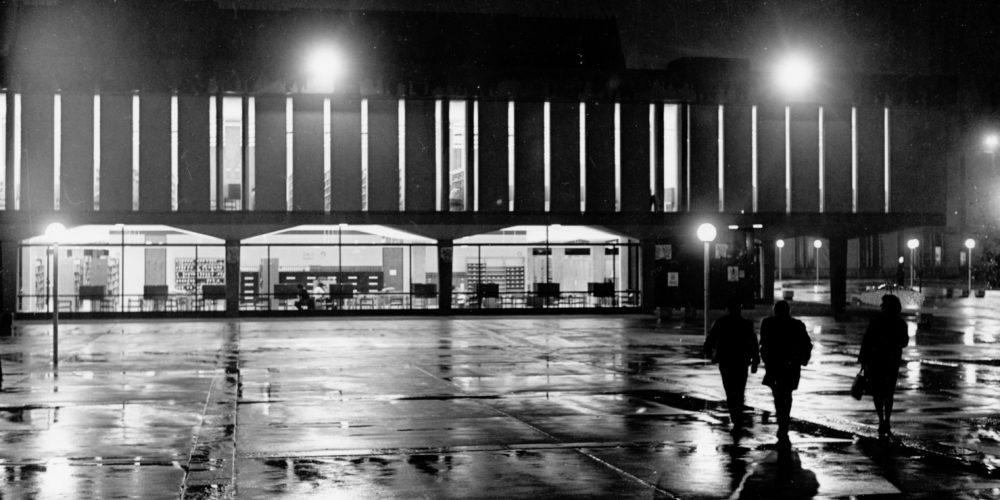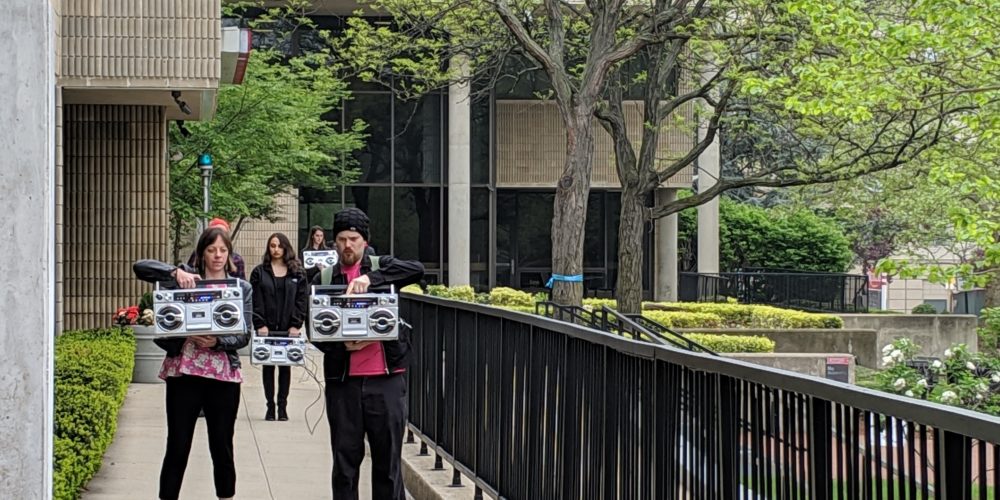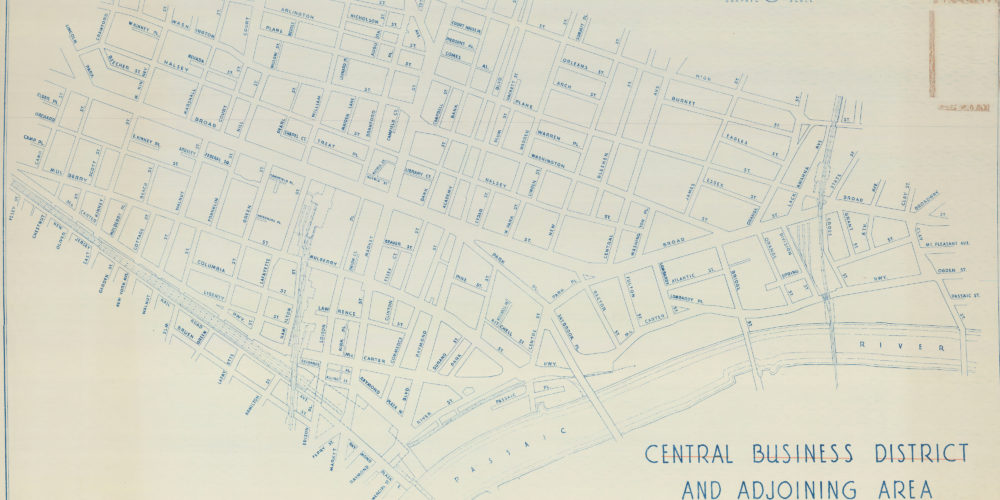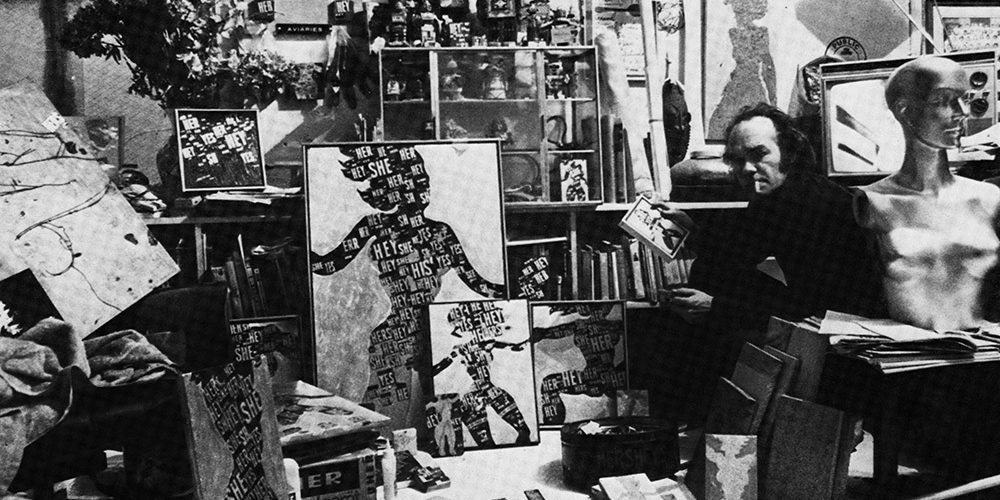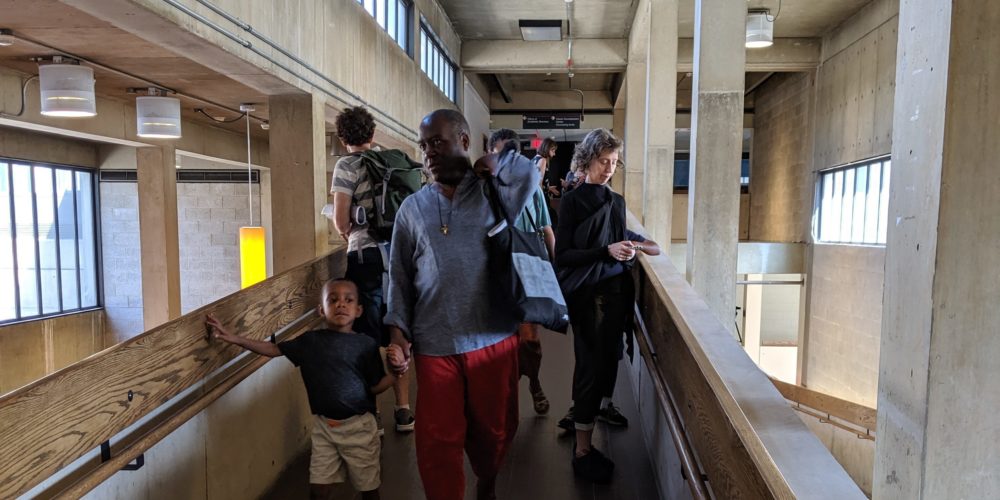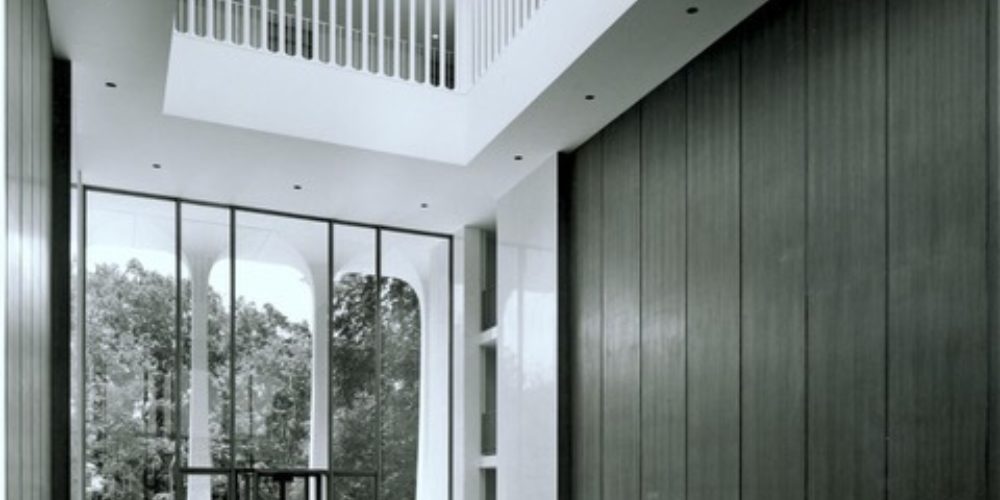
Rhythm 3 (Future) » Hedges, Windows, WhispersRhythm 3 (Future)
Hedges, Windows, Whispers

I want to make a sound map of the city, as people experienced and remembered those sounds.
My goal is to resist the ‘soundless city’ of Newark’s urban planners, which negated and neutralized the existing community.
I want to use the abstracted icons of families used in urban planning maps to create a topographic collage of sound. The icons of families slated to be removed turned them into iconographic entities that could, symbolically, be easily constrained and erased. I want to use those visual icons to repopulate the city with the traces of human sounds: music and noise, pleasurable and troublesome.
The choice of a binary, music and noise, is intentional: sound is neutral by itself but is experienced in affective ways, either as pleasurable or as disagreeable. The pleasurable affect of community sound can bring people together; the disagreeable affect of noise can create boundaries between them. The former is aligned with the idea of urban arts; the latter is aligned with the idea of urban thresholds, inclusion and exclusion. Both are forms of taking possession of space through sound.
My time focus is the 1960s, and I will be using a historical map from that time period [TBA].
To gather the sounds, I will be working with the publications of the urban planners, African American newspapers in Newark, and oral histories, all from the 1960s but before 1967.
The family icon come from the map “estimated relocation families – next decade, by community” from Re:New Newark, from 1961, pictured above.
I think I will be using this icon for all instances of sound, whether music or noise, to create a layered topographical map. But I will also use excerpts and quotes about those sounds in the free spaces of the map; these words will be pale and transparent enough that the street grid can be seen underneath, so that the words replicate the ephemeral nature of transitory sound.
Depending on what I find in the official documents, I may also use another icon to mark places where the planners wanted sound to be eliminated.
Urban Arts
The city as envisioned by Louis Danzig of the Newark Housing Authority was soundless. In his articles, as in other urban renewal documents, there is little mention of sounds outside of officially sanctioned places of high art. Instead, Danzig emphasized the need for embodied self-discipline and proper behavior: “Self-discipline and courtesy are required in direct proportion to population density. City people must have patterns of behavior for populous places – habits of industry, emotional and family stability, strict accountability to the law. Everyone must stop on a red light.” (Louis Danzig in Newark Commerce 1961)
For Mason Gross, President of Rutgers, who collaborated with Danzig in a shared vision of Newark’s future, sound was best contained in the ‘proper’ venues of high art: the concert hall or performing arts center. Gross deplored the deep cultural silence of the suburbs, which he saw as “weary, flat, stale, and unprofitable” with no opportunities for culture because of the alienated atomization of a vacuous consumer society. His answer was to promote the arts, and music in particular, in the cities, where urban-dwellers could attain true humanity through the beauty of the arts. But his definition of music, like his definition of the preferred audience, denied the existence of those already living in Newark: his definition of music was limited to the European traditions of opera, ballet, symphonies, and chamber music. Without these, New Jersey was culturally “bankrupt.” (Mason Gross speech, 1959)
Gross and Danzig’s containment of sound in emotional discipline and racially-coded cultural capital is in direct contrast to the joyous community of sound and music that Nathan Heard describes as part of his upbringing in Newark in the 1950s. Music was the core of his neighborhood, derelict and decaying though it was: “At the time I knew [the jazz vocalist] Jimmy Scott he was sort of like this neighborhood, full of life, full of people, and full of music. Music was everywhere.” Heard’s venues were different from those envisioned by Danzig and Gross: “…there was so much music in this city at that time. Bars weren’t bars, they were places where you went to hear live bands.” (Nathan Heard interview)
Participation in making pleasurable sound is a form of community building, but the value placed on the music – from the planners’ point of view – was related to the value placed on the community in question. To counter their vision of the soundless city, I want to use individual recollections of Newark to gather the ephemeral moments in which the spontaneous urban arts took place and how they created community: in churches, schools, street corners, bars. Community is also created, though, through other types of sound that are not usually understood as art but are rhythmic in their entrainment of affect, in the chants of protesters or children’s street games, for instance. These, too, are moments to be mapped.
Urban Thresholds = Hedges, Windows, Whispers.
I define ‘urban thresholds’ as sensory experiences and expressions that mark transitional points: they create boundaries of access and access and determine who gets to go where, when, and with what emotions. Sound is used by ‘insiders’ to identify outsiders, for instance. But sound also travels through and over physical thresholds, in distorted, muffled, and amplified ways. Physical thresholds, like hedges or windows, don’t stop sound but condition their affective impact, for instance as half-perceived whispers of exclusion. I will plot these points of sound, or noise, on the map as well, as part of the typography of the city soundscape. Oral histories recall these moments of exclusion and testing: the neighbors who listened behind hedges to monitor racially-different newcomers or who walked past the houses of other newcomers, pointing and whispering invectives.

Digression: Sound as Affective Threshold
My experience of sound as an affective threshold was first inspired by my experience of Robertson Hall, built on the Princeton University campus by Minoru Yamasaki, the architect of the World Trade Center, in the same years as the Newark campus was being constructed. Robertson Hall is shaped as a symmetrical rectangle, with identical entrances on its two parallel, longer sides. Walking into the building from either entrance, one steps into a central lobby with a high ceiling reaching up to a skylight and an internal balcony with offices ringing its upper third. Yamasaki envisioned the lobby as a communal meeting space in which scholars, emerging from the quiet isolation of their quasi-monkish office ‘cells,’ could join the community of scholars and the shared deliberations of the public sphere. At the same time, the narrow, vertical rise of the space also suggests the cathedral, as the thin lines of the design elements draw the gaze upwards to the light and invoke the quiet contemplation of the sacred space.
Both interpretations – communal space and sacred space – are possible given the spatial design, and both modes are in fact experienced by the entrant, not simultaneously, but separately and distinctly depending on which entrance s/he uses. The doors – as structural thresholds – are identical in their shape, design, and materials. But if one enters from one side, one has the feeling of stepping into a communal space, in which people lounge and speak in natural tones of voice. If one enters from the other side, one has the feeling of stepping into a sacred space, one of hushed tones, with the imperative to lower one’s voice out of respect for the quiet sanctuary.
What produces this profound difference in affect? Not the structural threshold – not the doors, or the walls – nor the activities occurring inside. If you enter the one side and then the other within a matter of minutes, with the same occupants inside, you still get the difference in sensory experience and affect.
The difference is produced by the sound outside of the building. Outside of one entrance is a grassy knoll that slopes steeply down to a street intersection, making it inaccessible for people to sit upon. The grass lawn is empty and quiet. Entering from that side, the lobby seems like a space of social community, where normal tones of voice can be used in the hum of conversation. Outside of the other entrance is a large plaza with a recessed fountain that invites visitors to walk down into its flat basin. The fountain spray is loud and has the sonic effect of a waterfall, matching the noise of the families and children who play in the fountain. Entering from this side, the lobby seems unusually still and hushed, deep in serene contemplation, cathedral-like.
